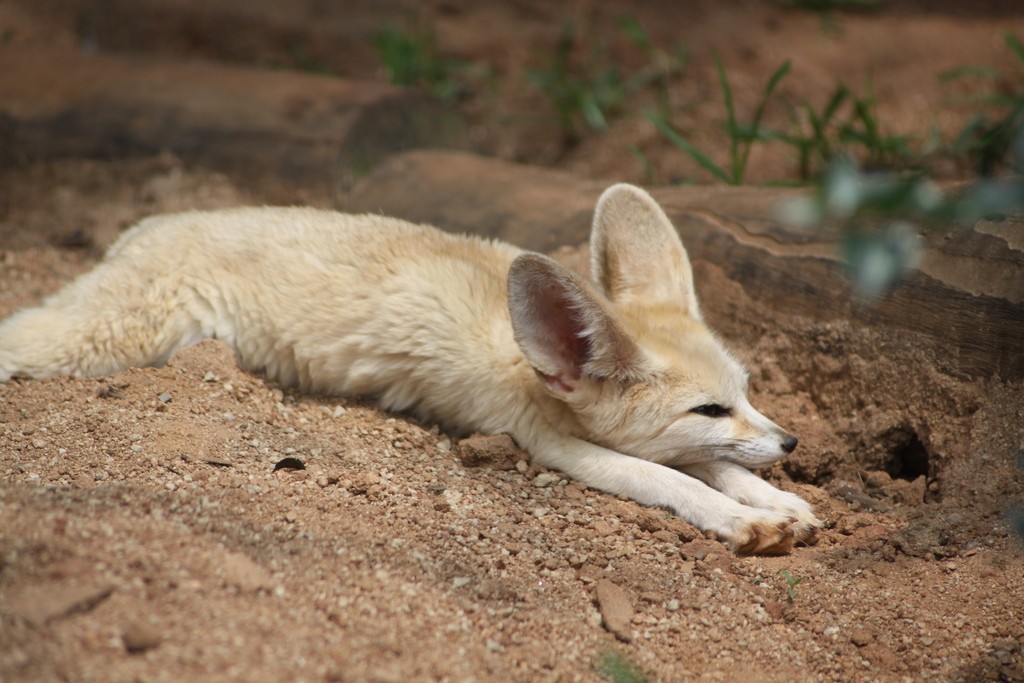Fennec fox
A species of True foxes Scientific name : Vulpes zerda Genus : True foxes
Fennec fox, A species of True foxes
Scientific name: Vulpes zerda
Genus: True foxes
Content
Description General Info
 Photo By Derek Keats , used under CC-BY-2.0 /Cropped and compressed from original
Photo By Derek Keats , used under CC-BY-2.0 /Cropped and compressed from original Description
The fennec fox weighs about 0.7–1.6 kg (1.5–3.5 lb), with a body length of between 24–41 cm (9–16 in); it is around 20.3 cm (8 in) tall. It is the smallest species of canid in the world. The tail has a black tip and is 18–31 cm (7–12 in) long, while the ears can be between 10–15 cm (3.9–5.9 in) long. The coat is often a cream colour and fluffy, which deflects heat during the day and keeps the fox warm at night. The fennec's characteristic ears are the largest among all foxes relative to body size, and serve to dissipate heat, as they have many blood vessels close to the skin. The ears of a fennec are sensitive enough to hear prey that may be underground; the soles of its feet are protected from the hot desert sand by thick fur. 
General Info
Lifespan
10-14 years
Diet
Fennec fox's diet primarily consists of insects. However, they supplement their insectivorous diet with small mammals, birds, eggs, and plant matter, showing an opportunistic feeding behavior according to the changing seasons and food availability.
Appearance
The fennec fox is a small, light-bodied creature adorned with thick, fluffy fur. It exhibits a compelling coloration, primarily a sandy hue that changes slightly depending on the environment, and large, dark eyes surrounded by a black mask. Fennec fox demonstrates remarkable adaptability with oversized ears used for thermoregulation, and an unusually long, bushy tail. Its size and characteristics remain uniform across both genders, irrespective of age.
Behavior
Fennec fox is a nocturnal, solitary animal renowned for its unique desert adaptations. It forages for insects, small rodents, and plants at night, using keen hearing to locate prey. Fennec fox also employs opportunistic caching behaviour to store surplus food. It marks territory by urinating, with males displaying aggressive posturing when challenged. Extraordinary survival qualities include its ability to extract water from food, ensuring survival in arid conditions.
Population
Stable